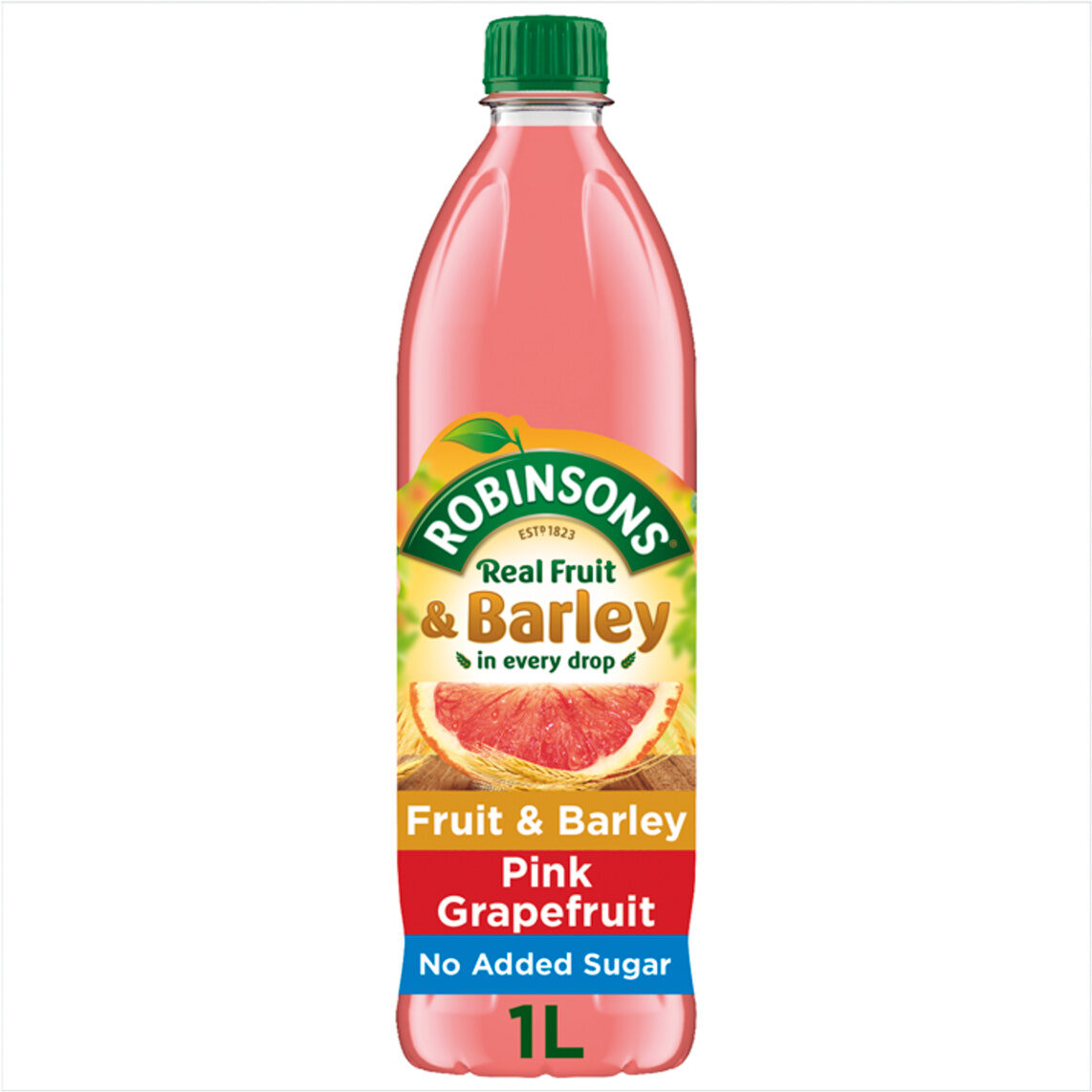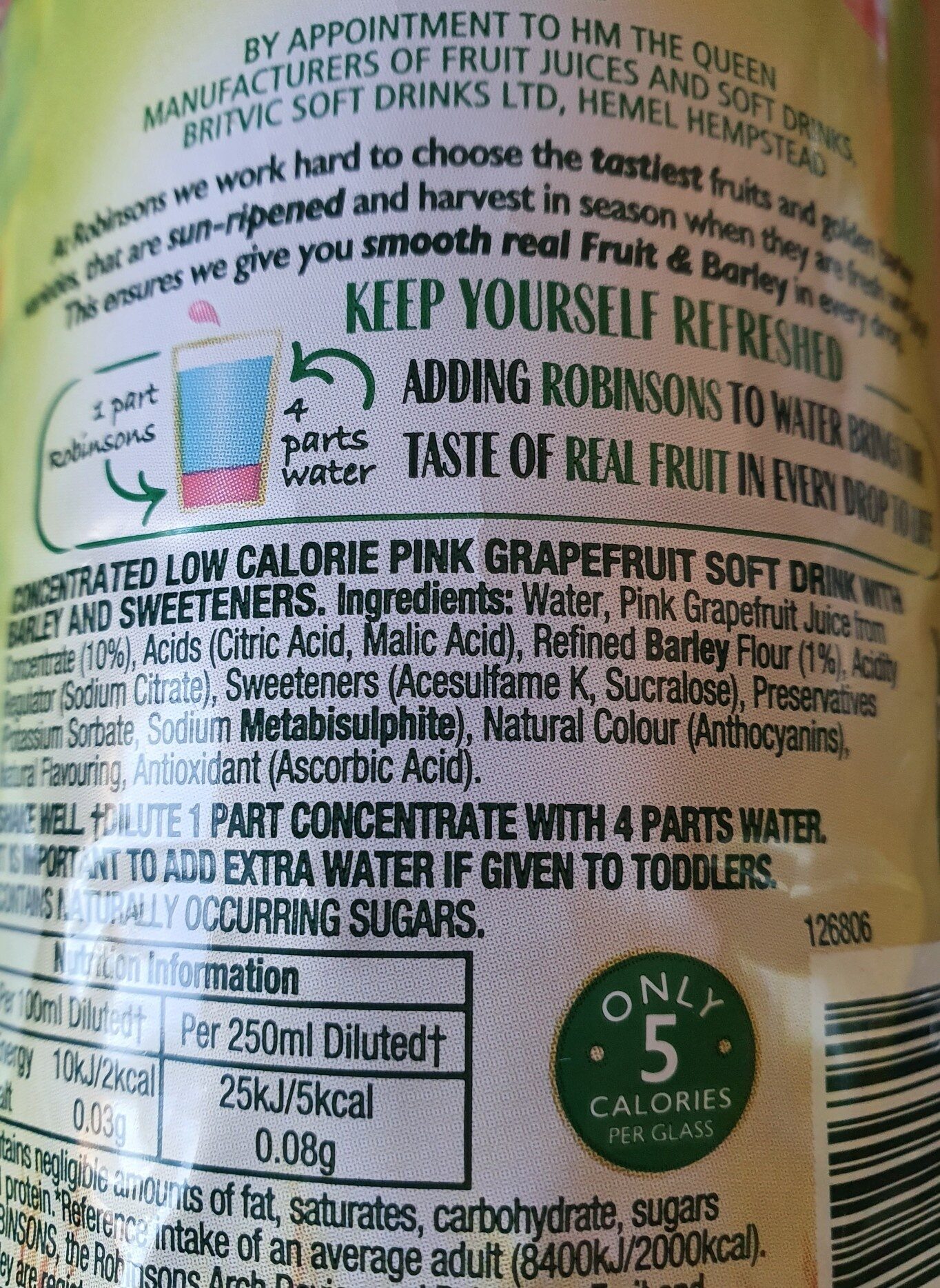Fruit & Barley Pink Grapefruit Squash - Robinsons - 1L
This product page is not complete. You can help to complete it by editing it and adding more data from the photos we have, or by taking more photos using the app for Android or iPhone/iPad. Thank you!
×
Barcode: 5010102101791 (EAN / EAN-13)
Common name: Pink Grapefruit Cordial
Quantity: 1L
Brands: Robinsons
Categories: en:Beverages, en:Artificially sweetened beverages, en:Cordial
Labels, certifications, awards: en:Vegetarian, en:Vegan, No added sugar
Manufacturing or processing places: England
Countries where sold: Hong Cong, An Rìoghachd Aonaichte
Matching with your preferences
Environment
Packaging
Transportation
Report a problem
Data sources
Product added on by openfoodfacts-contributors
Last edit of product page on by qwertyes.
Product page also edited by charlesnepote, elcoco, foodless, inf, kiliweb, pjmarner, roboto-app, yuka.UUtjSE5xb2krOU00cTg4dTFCblN4TWhINnBtTFZIcVZkZm93SVE9PQ, yuka.sY2b0xO6T85zoF3NwEKvll5cDcvljTHIbALtuk6Qn9iwJZC2U8p04JfgHas.










